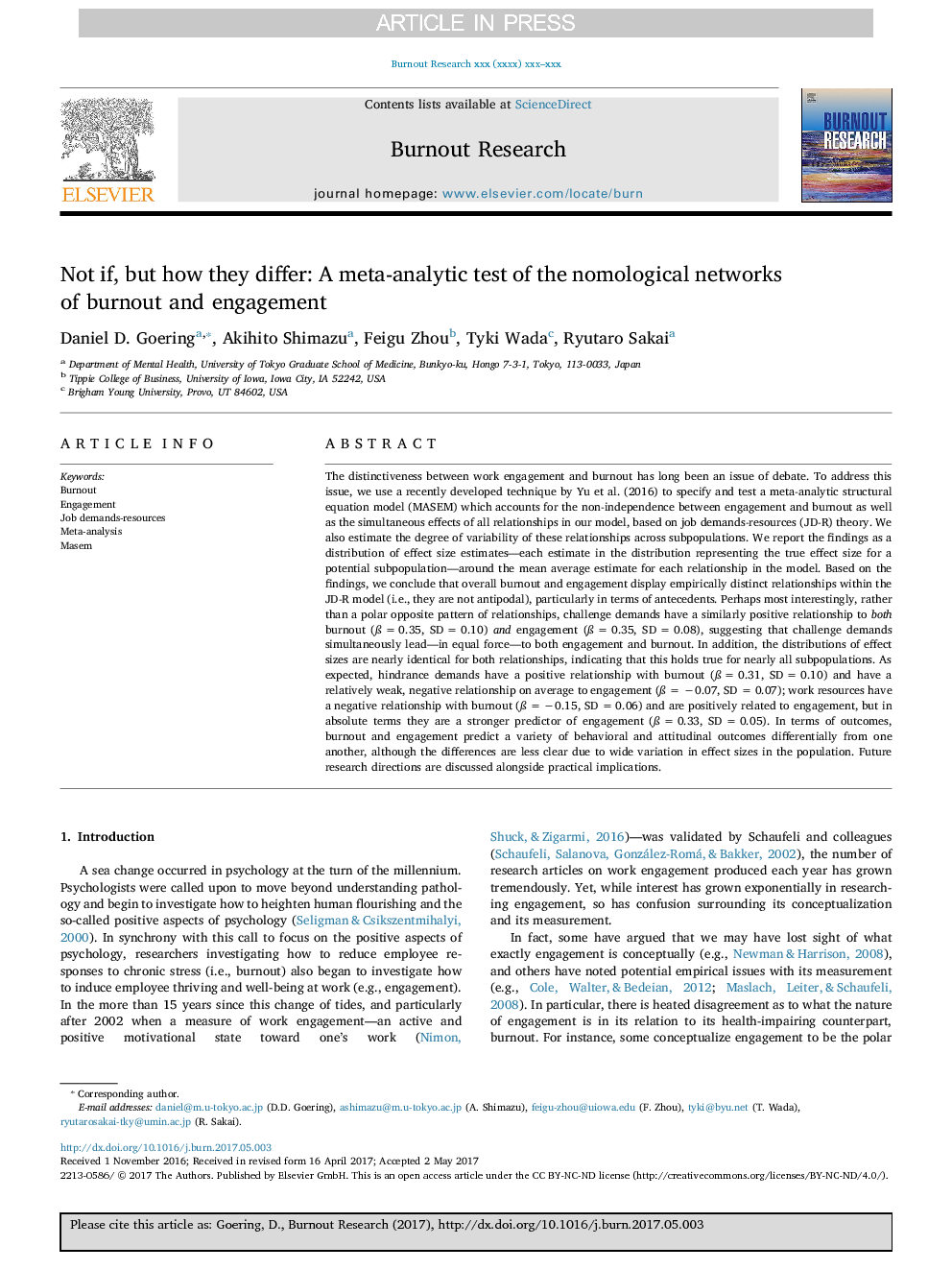ترجمه فارسی عنوان مقاله
نه اگر، اما چگونه آنها متفاوت است: یک آزمایش متاآنالیز از شبکه های اساسی فرسودگی شغلی و تعامل
عنوان انگلیسی
Not if, but how they differ: A meta-analytic test of the nomological networks of burnout and engagement
| کد مقاله | سال انتشار | تعداد صفحات مقاله انگلیسی |
|---|---|---|
| 146113 | 2017 | 14 صفحه PDF |
منبع

Publisher : Elsevier - Science Direct (الزویر - ساینس دایرکت)
Journal : Burnout Research, Volume 5, June 2017, Pages 21-34

